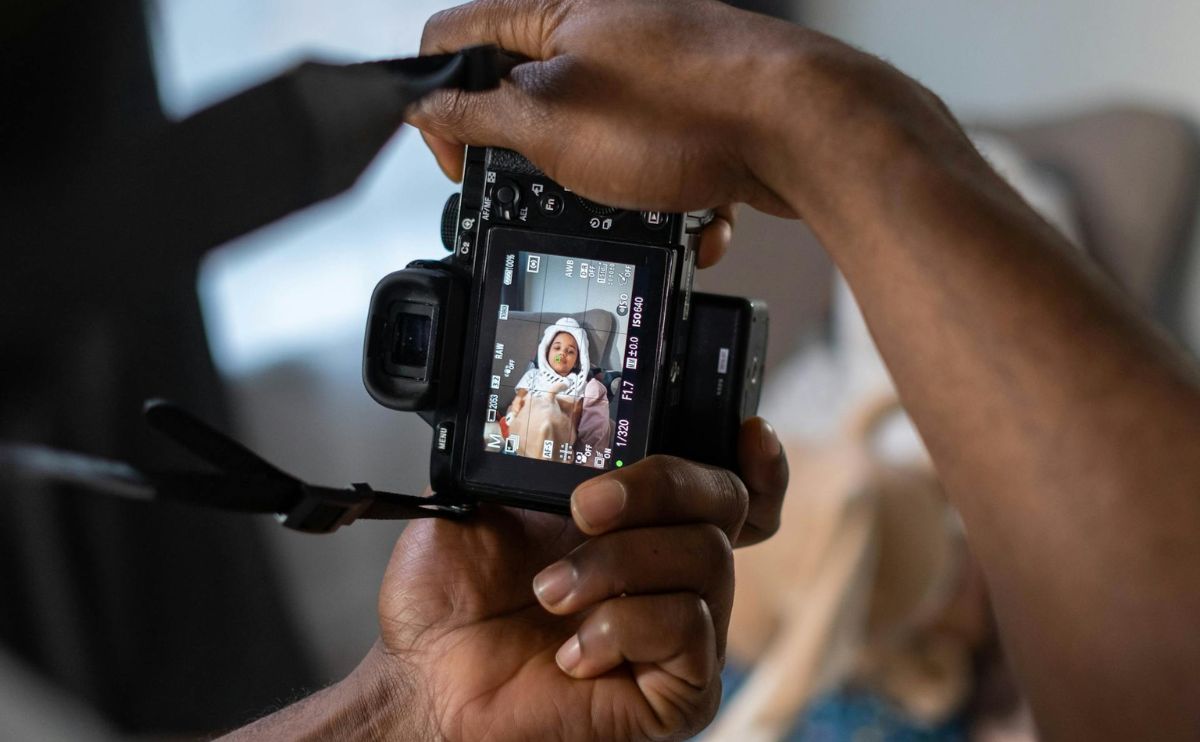What Is the Best Lighting for Newborn Photography?

A Practical Guide for Parents Taking Baby Photos at Home
As a new parent, you're surrounded by tiny, unforgettable moments — from sleepy yawns to the way your baby curls up in your arms. Naturally, you want to capture these memories. But when your photos turn out too dark, too harsh, or just “off,” it can be frustrating.
The secret to beautiful baby photography isn’t a fancy camera — it’s good lighting. And the best part? You can get it right at home using simple techniques and a little bit of natural light.
In this guide, we’ll show you exactly how to create soft, natural lighting for newborn photography — no professional gear required.
Why Lighting Is So Important in Baby Photography?
Lighting sets the tone for your photos. In baby photography especially, it’s key to getting that soft, gentle look everyone loves. Here’s why it matters:
- Newborns have delicate features that look best in soft, flattering light
- Harsh lighting can create dark shadows or make your baby squint
- Good lighting means less editing — your photos will look polished straight from the camera
The Best Light? Soft, Natural Daylight
Nearly every professional photographer will tell you: soft, natural light is the gold standard for newborn photography. It’s kind on baby’s eyes, creates even skin tones, and gives your photos a natural, airy feel.
Here’s how to make the most of it:
1. Use Indirect Window Light
Find a window that lets in bright, but indirect sunlight — north or east-facing is ideal.
- Shoot late morning or early afternoon for soft, warm tones
- Use sheer curtains to diffuse harsh rays
- Place your baby about 2–3 feet away from the window
2. Turn Off Overhead Lights
Ceiling lights can cast yellow tones and interfere with natural daylight. For the best results, rely on the daylight alone and turn off artificial lighting.
3. Pay Attention to Shadow Direction
Position your baby so the light falls from the side or at a 45-degree angle. This adds natural depth to your photo. Avoid lighting from directly behind or in front of your baby.
Not Enough Natural Light? No Problem.
Whether you live in a flat with small windows or you're shooting in winter, you can still work with what you have.
Use What You’ve Got:
1. Try a Ring Light or Softbox
If you already own a ring light or softbox, set it up at an angle and use a diffuser to soften the light. Aim it from above or to the side — never straight on.
2. Bounce Light with What’s at Home
No fancy gear? Place a desk lamp near a white wall and bounce the light back onto your baby. This creates a soft, even glow.
3. DIY Diffuser Trick
Use a sheer fabric or white pillowcase over a light source (making sure it’s cool and safe). This mimics the effect of natural window light.
Should I Use Flash?
We’re often asked if it’s okay to use flash on a newborn. The short answer: it can be safe when done properly, but we recommend avoiding it for DIY home photography.
Here’s why:
- Direct flash creates harsh, unnatural shadows
- It can startle your baby, especially when they’re sleeping
- Flash setups are tricky without proper diffusers or bounce tools
If you must use flash, make sure it’s indirect — bounce it off a white ceiling or wall, and never aim it directly at your baby’s face.
Positioning Tips to Maximise Your Lighting
Once you’ve got your light source, baby placement is just as important. Try these angles:
- Side lighting: Lie your baby on their side with light coming in from one direction — this adds soft contrast to their features.
- Top-down light: For overhead shots (flat-lay style), use light from above to evenly illuminate your baby lying on a bed or rug.
- 45-degree light: Angle your baby slightly toward the light to reduce shadows under the nose and eyes.
And remember — your baby’s comfort comes first. Make sure they’re warm, safe, and never left alone during setup.
Where at Home Should I Shoot?
You don’t need a studio to get great light. Here are a few spots to try:
- A bedroom with a big window and white or neutral bedding
- The nursery during mid-morning when the light is soft and even
- A living room with glass doors or light walls
- The entryway near an open door — a surprising source of natural, even lighting
Tip: Hold your hand out to test the lighting — if you see soft, low-contrast shadows, it’s a great spot.
Final Tips for Great Lighting (Without the Stress)
- Use white blankets, onesies, and props — they reflect light beautifully
- Skip dark or patterned backgrounds, which absorb light and distract
- Keep sessions short — even 10 minutes of good lighting is enough
- If the lighting isn’t working, move to a new spot or try again later
In Summary: What’s the Best Lighting for Newborn Photography?
- Natural light from a nearby window is the most flattering
- Always use indirect daylight — not direct sun
- Light-coloured surroundings enhance your results
- Avoid flash unless you’re experienced with it
- Stay flexible and relaxed — the magic often happens in the candid moments
At Tinytography, we believe that every parent deserves beautiful, affordable baby photos — without the stress of a studio. Our packages are designed for real life, real homes, and real families.
Ready to skip the guesswork and let us help you capture the moments that matter?
Explore Our Packages:
Frequently Asked Questions
1. What’s the best time of day to photograph my baby using natural light?
Mid-morning or early afternoon is ideal. The light is bright but soft, and your baby is more likely to be rested and content.
2. Can I take professional-looking baby photos using just my phone?
Yes! Most phones today have excellent cameras. Just focus on soft lighting, clean backgrounds, and getting down to your baby’s level.
3. How close should my baby be to the window?
2–3 feet away works well. This gives you a good amount of light without harsh highlights or shadows.
4. Is it safe to use a lamp for baby photography?
Yes, as long as it’s not too hot and you diffuse it with a white cloth or bounce it off a surface. Never shine a bright light directly at your baby.
5. How can I tell if my lighting setup is working?
Look at your hand in the light — if the shadows are soft and the colours look natural, your lighting is likely perfect for baby photos.



Comments